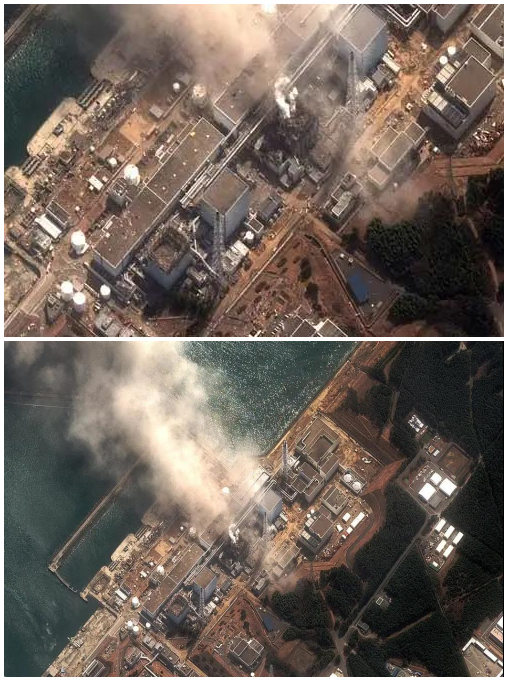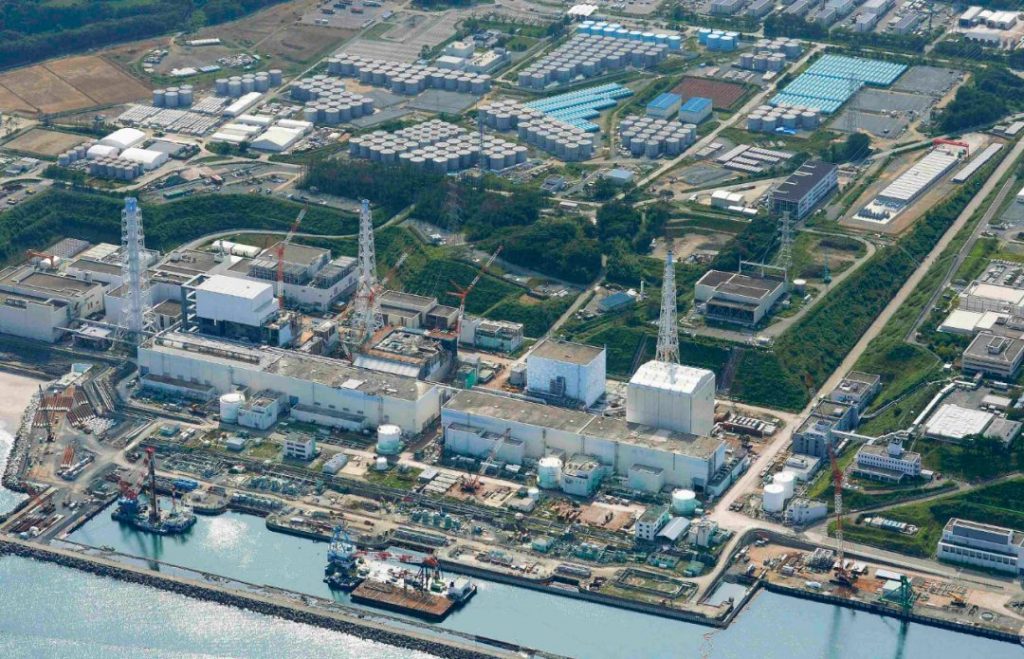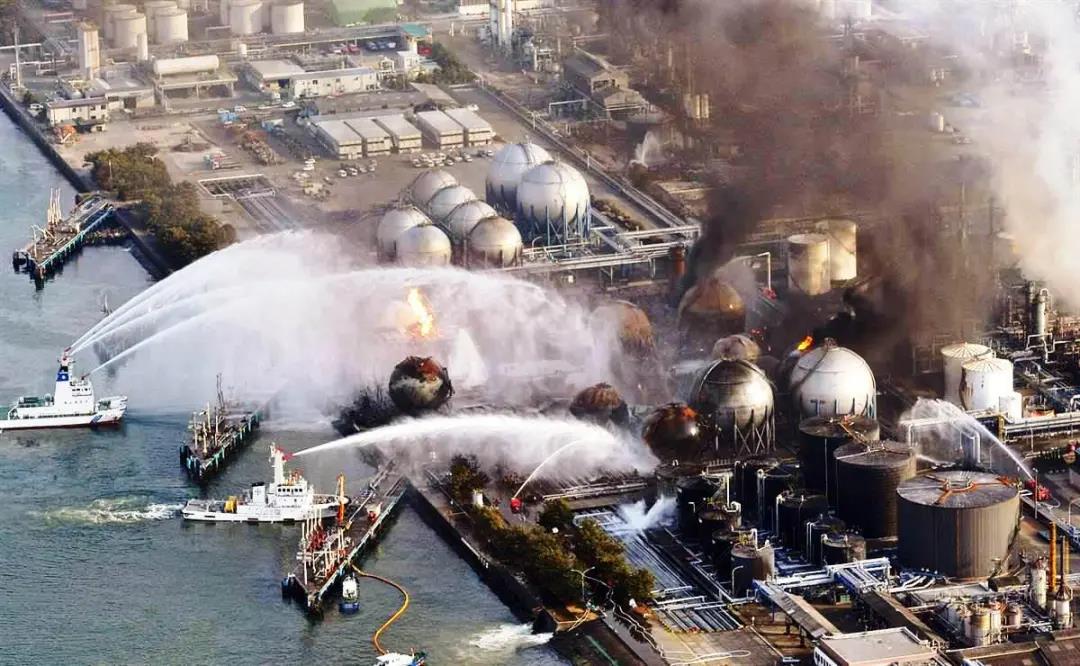The Japanese government held a cabinet meeting on the 13th to formally decide that the nuclear sewage from the Fukushima Daiichi nuclear power plant will be filtered and diluted into the sea. How is nuclear sewage produced? What will be the impact of sewage discharge to the sea? Sike analyzed the emission event that attracted the eyes of the world through a satellite perspective.
How did this “disaster” happen?
Back in the clockwise on March 11, 2011, a mega-earthquake hit the northeastern coast of Japan. The earthquake and the ensuing tsunami triggered a nuclear leak at the Fukushima Daiichi nuclear power plant operated by Tokyo Electric Power Company.
This is one of the most serious nuclear accidents in the world so far. The accident has caused a large amount of radioactive material leakage and has had a far-reaching impact on the marine environment, food safety and human health. To date, 337 square kilometers of area have been designated as “evacuation area”, and about 36,000 original residents have not returned home.

More than 10 years have passed since the Fukushima nuclear accident in Japan, but its nuclear sewage treatment problem remains unresolved. According to Japanese media analysis, the Japanese government’s decision to discharge nuclear sewage may be due to the fact that the storage tank capacity of nuclear sewage at the Fukushima Daiichi nuclear power plant is about to reach the ceiling.
How is nuclear sewage produced?
There are three main sources of radioactive wastewater from Fukushima Nuclear Power Plant, the original coolant of the reactor, the newly injected water to continuously cool the core after the accident, and the large amount of groundwater and rainwater infiltrated into the reactor.
After the radiation leakage, in order to control the temperature of the reactor, continuous water injection is needed for cooling and cooling. Although nuclear wastewater can be used for cyclic cooling, due to the seafront and low terrain of the Fukushima Nuclear Power Plant, groundwater and rainwater continue to seep, so the nuclear wastewater is becoming more and more abundant.
In order to store nuclear sewage, Tokyo Electric Power has prepared about 1,000 water storage tanks, and 90% of them are now full. The total capacity of all water storage facilities is about 1.37 million tons, and it is expected to reach the limit by the autumn of 2022. Thousands of dense round water storage tanks are placed in the plant, which can be clearly observed with satellite maps.
Japan’s Yomiuri Shimbun reported that the Tokyo Electric Power Company now adds 140 tons of “treated water” per day, which is estimated to reach the storage tank ceiling by September 2022. 1.37 million tons. With so much nuclear wastewater, Japan is “unbearable”.
What is the impact of sewage into the sea?
Since 2013, the Japanese government has evaluated five post-treatment wastewater treatment programs: strata injection, discharge into the sea, steam release, hydrogen release and underground burial.
In February 2020, the ALPS Water Purification Subcommission released the assessment report of the Wastewater Treatment Program after the Fukushima nuclear accident in Japan concluded that both marine discharge and steam release are feasible programs, among which marine discharge is more convenient, and other disposal programs are in terms of economy, technical maturity or timing. Poor consideration.
What will happen if sewage containing radioactive substances is discharged into the sea? First of all, Japan’s Pacific coast will be affected, especially the local waters around Fukushima Prefecture, and then sewage will pollute the East China Sea.
According to the German Institute for Marine Scientific Research, the coast of Fukushima has the strongest ocean current in the world. Within 57 days from the date of discharge, radioactive material will spread to most of the Pacific Ocean and spread to the global sea in 10 years. Greenpeace nuclear experts pointed out that carbon 14 in Japanese nuclear wastewater is dangerous for thousands of years and may cause genetic damage.
Simulation renderings of German marine scientific research on the spread rate and impact of nuclear sewage. As can be seen from the picture, radioactive material will continue to spread over time, and then spread to global waters. Source: GEOMA
Some Japanese scholars point out that the ocean around Fukushima is not only a fishing ground on which local fishermen depend, but also part of the Pacific Ocean and even the global ocean. The discharge of nuclear sewage into the ocean will affect global fish migration, ocean-going fisheries, human health, ecological security and other aspects. Therefore, this problem is not only in Japan. The problem is an international issue related to the ecological and environmental security of the global marine.
According to satellite images in August 2020, it can be found that the sewage tank only occupies a piece of space around the Fukushima nuclear power plant, and there is still an area around it that can develop and store wastewater.
Some analysts say that it can be seen from satellite images that the earliest batch of wastewater tanks have rusted, and replacement will be a matter of time, which is also a big expense. The Japanese government discharges nuclear sewage to the sea not because of insufficient space, but because it is unwilling to bear the maintenance cost.
Regarding how to dispose of nuclear sewage, Liu Xinhua, chief expert of the Nuclear and Radiation Safety Center of the Ministry of Ecology and Environment, believes that the Japanese government should adopt wastewater treatment technologies and devices with high decontamination factors to further purify excess radionuclides and reduce the radionuclide content in the treated wastewater as much as possible; study tritium treatment technology and timely. Make public the progress and results of research, and if feasible, technologies should be used immediately for the treatment of tritium in wastewater.

Greenpeace suggested that in order to avoid a continuous increase in nuclear radiation pollution wastewater, cold air should replace the current water cooling when cooling nuclear fuel rod debris. Facing the problem of continuous groundwater infiltration, a moat should be built on the current site of the Fukushima Daiichi nuclear power plant to block groundwater.



